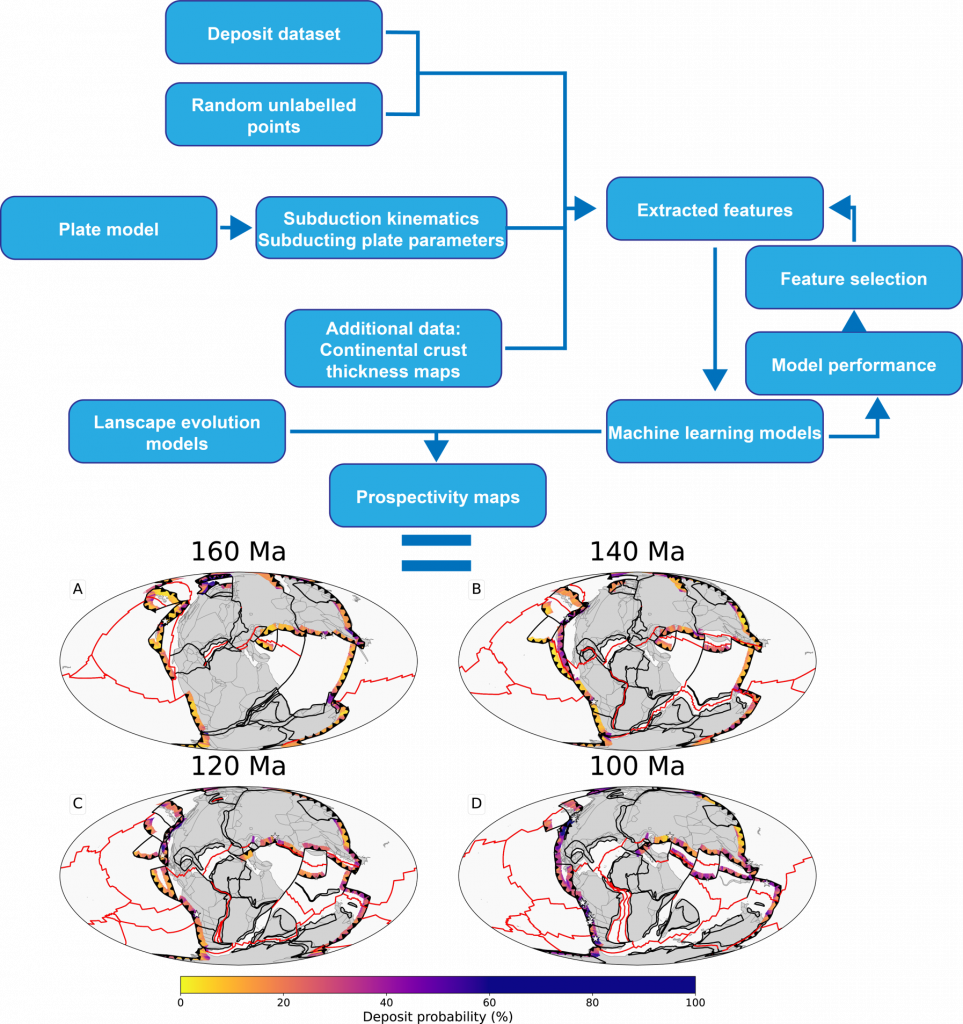Seminar Details:
- Date: Wednesday, 12 Jun 2024
- Time: 11 am – 12 pm AEDT
- Location: Geoscience Conference Room 449, online
- Zoom Link: https://us05web.zoom.us/j/81643060569?pwd=2GheRqQOL0FyibTHqhZhdNw35bPxvo.1&from=addon
Predicting global porphyry copper prospectivity using positive-unlabelled machine learning
GNS Science is partway through a five-year multi-faceted research programme to investigate supercritical geothermal resources for future electricity generation. These resources potentially occur at greater depth under the Taupo Volcanic Zone (TVZ) than New Zealand’s present geothermal fields. One research strand in the programme was to revisit and refine interpretations of mid-crustal structure and rock rheology. To do this, crustal basement xenoliths and ignimbrite clasts were sampled and analysed, and seismicity and P-wave velocity profiles interpreted. Results indicate the gently west-dipping rather than the subvertically-dipping terrane geometry under the Taup. Though porphyry copper deposits contain the majority of the world’s known copper reserves, the different factors leading to their formation are not precisely constrained. Previous efforts to tackle this problem using data-driven machine learning methods have been hindered by a paucity of fully labelled datasets. The suite of models presented here were created using a semi-supervised positive-unlabelled (PU) algorithm, requiring only a relatively small quantity of training data. These models are used to model porphyry copper prospectivity through time and to investigate the processes behind the genesis of these deposits. Furthermore, deep-time erosion rate estimates derived from global landscape evolution models provide insight into the potential for deposits formed in the distant past to survive to the present day. The two factors of deposit formation and preservation are combined into a powerful prospectivity model, with the potential to facilitate the identification of possible new prospective zones along the world’s subduction zones through time and help minimise the environmental and financial costs of mineral exploration.

![]()

